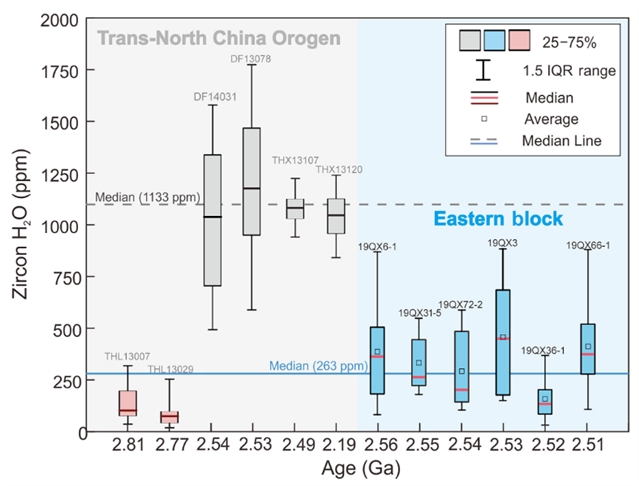
长江大学夏小平团队近日提出TTGs水氧同位素揭示了太古宙大陆地壳两期幔柱-凹陷成因。这一研究成果于2025年6月11日发表在《科学进展》杂志上。
太古宙大陆地壳的演化涉及镁铁质地壳的部分熔融,形成英云闪长岩-奥长花岗岩-花岗闪长岩(TTG)系列。然而,地壳生成仍然是个谜,人们提出了板块构造和非板块构造模式。在这项研究中,研究组发现,华北克拉通东部地块(EB)约25亿年前TTG中的锆石含水量低(中位数为百万分之263),δ18O值高(中位数为6.22‰),它们之间呈负相关,这表明存在厚的混合和水合镁铁质来源。
相比之下,在超俯冲带背景下形成的华北造山带中,相邻同时代TTG的锆石含水量明显较高。这些结果支持TTG形成的两阶段地幔柱凹陷过程。该研究表明,太古宙大陆地壳,如EB中的地壳,最有可能起源于与地幔柱相关的海洋高原,而不是板块构造体制下与俯冲相关的岛弧岩浆作用。
附:英文原文
Title: A two-stage mantle plume-sagduction origin of Archean continental crust revealed by water and oxygen isotopes of TTGs
Author: Dingyi Zhao, Peter A. Cawood, Fang-Zhen Teng, Guochun Zhao, Xiao-Ping Xia, Min Sun, Xiangsong Wang
Issue&Volume: 2025-06-11
Abstract: Evolution of Archean continental crust involved partial melting of mafic crust to form the tonalite-trondhjemite-granodiorite (TTG) series. However, crustal generation remains enigmatic with both plate tectonic and non-plate tectonic modes proposed. In this study, we show that zircons from the ~2.5–billion years ago TTGs in the Eastern Block (EB) of the North China Craton have low water contents (median of 263 parts per million) and high δ18O values (median of 6.22‰) and a negative correlation between them, which suggest a thick hybridized and hydrated mafic source. By contrast, zircon water contents of the adjoining coeval TTGs in the Trans-North China Orogen, formed in a supra-subduction zone setting, are notably higher. These results support a two-stage mantle plume-sagduction process for TTG formation. Our study suggests that Archean continental crust, such as that in the EB, most likely originated from plume-related oceanic plateaus, rather than subduction-related island arc magmatism under a plate tectonic regime.
DOI: adr9513
Source: https://www.science.org/doi/10.1126/sciadv.adr9513
